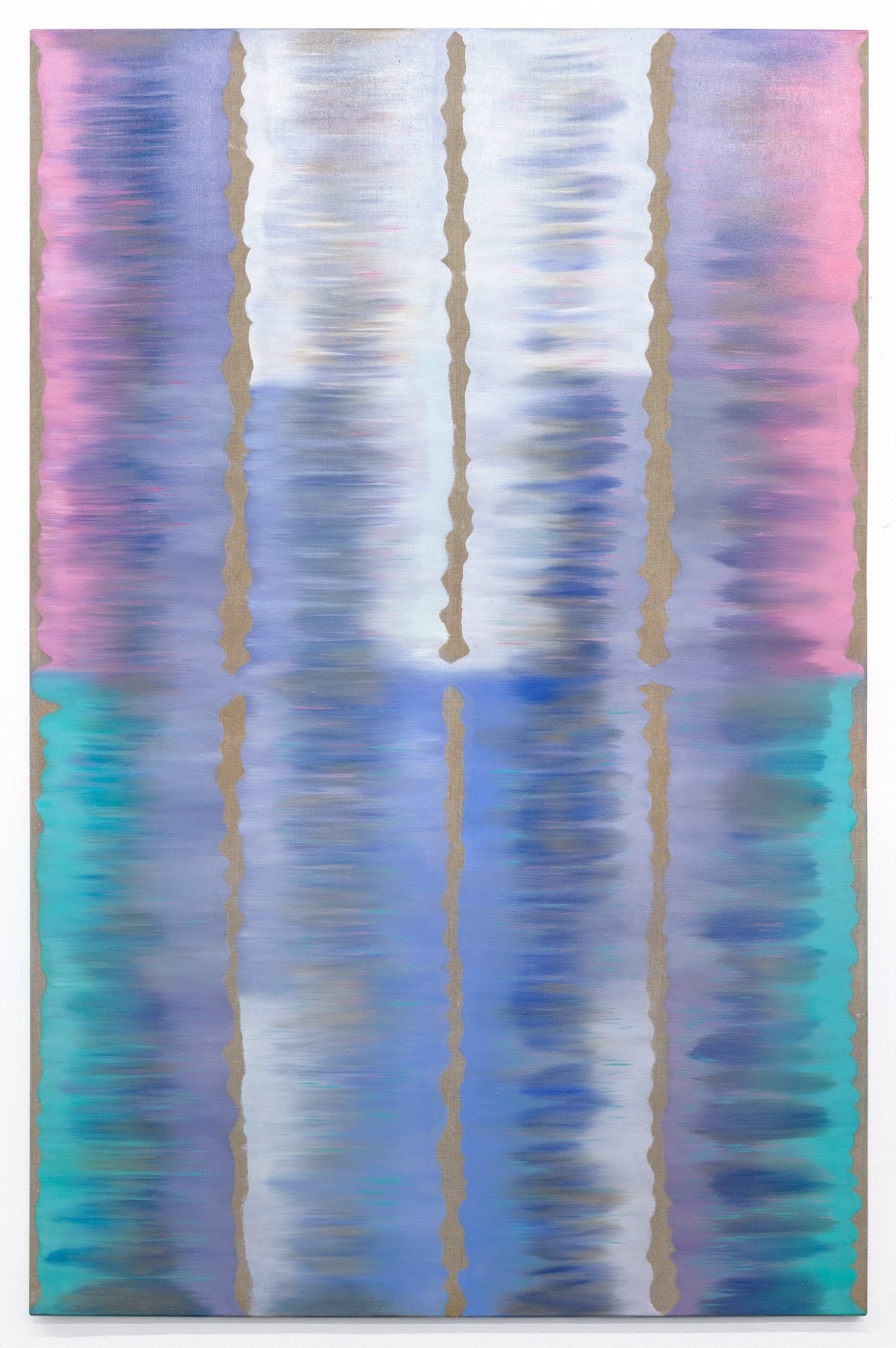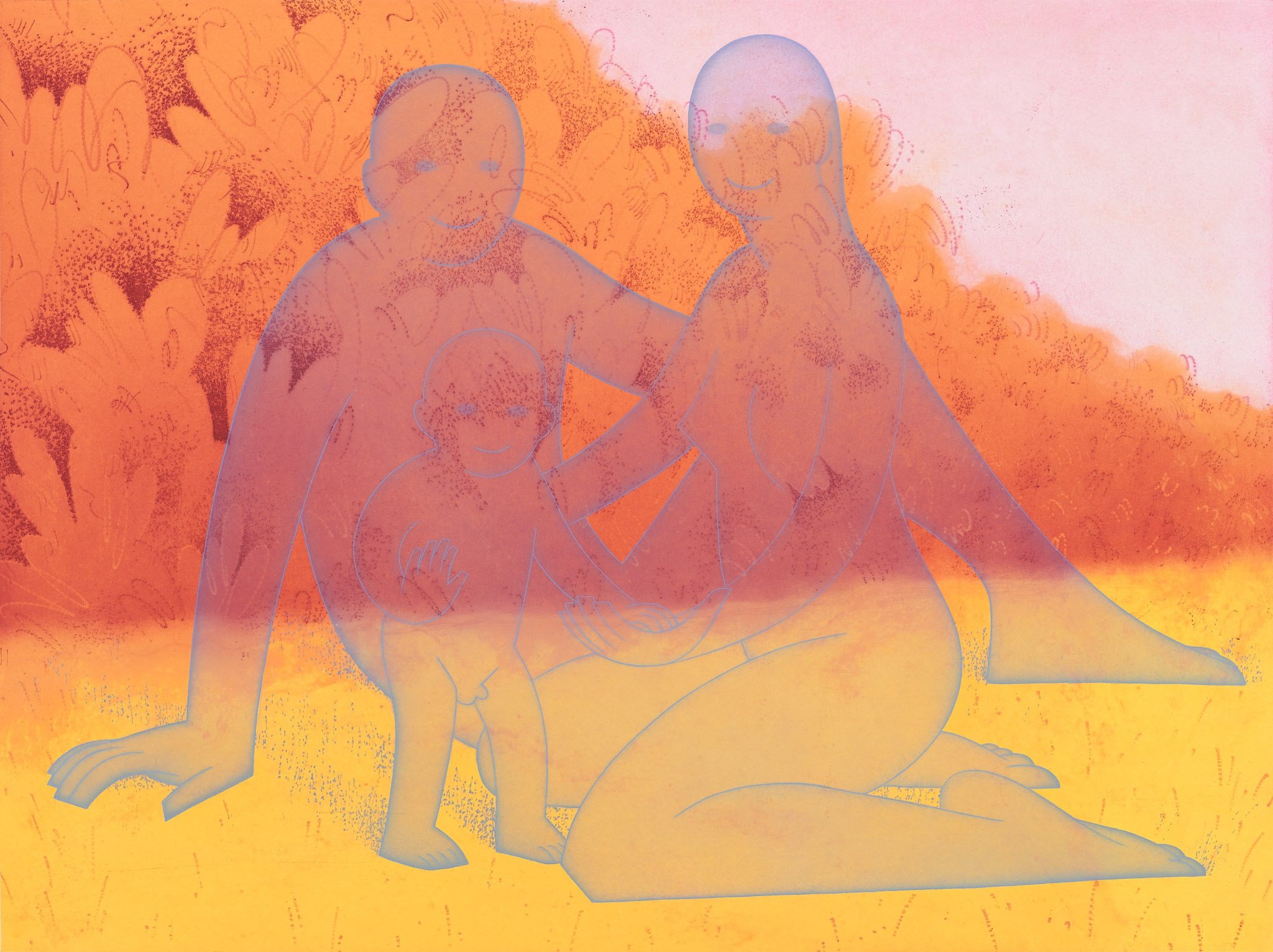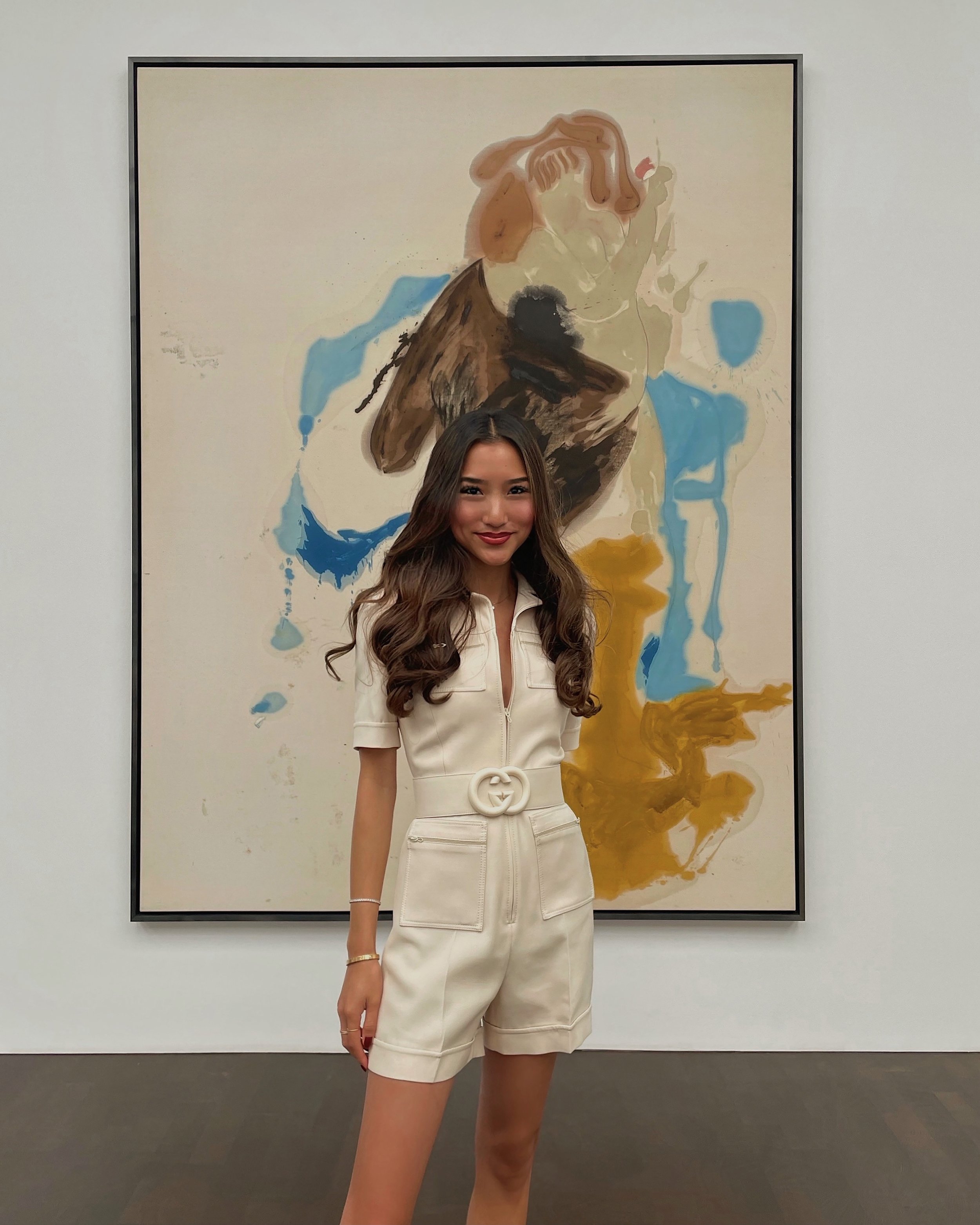CLAUDIA CHENG CURATES AN EXHIBITION OF WOMEN ARTISTS EXPLORING SPIRITUALITY FOR ARTSY
Words by Olivia Wilson
‘Window to Her Soul’, featuring both emerging and established female painters, places the exploration of spiritual themes at its core. When curating the show, the link between art and spirituality is what drove Claudia Cheng, the curator. “With this show, I wanted to impart the idea that art can be a vessel to connect humans with spiritual awareness”, Cheng shares. Indeed, since the early 20th century, female artists such as Hilma Af Klint, Hilla Rebay, Georgiana Houghton and Emma Kunz have employed art as a language to explore spirituality. The works in this exhibition serve as visible proof of the spiritual, intangible world beyond the practical one. Regarding this, Cheng says she “hopes these works may enlighten the viewer and give rise to the spiritual awareness that all living forms are connected in harmony with the universe”.
By focusing on the spiritual, ‘un-seen’ aspects of femininity and the female experience, Cheng erodes the archetypal view of women throughout art history as objects of male, sensual desire. Portraying the female psyche from a woman’s perspective shifts the archetype of femininity and sheds critical light on other aspects of the female experience such as the emotional journeys of growing into our bodies or giving birth to life.
Molly Greene, Insinuator, 2021. Source: Artsy
The selected artists are united in their rendering of inner spiritual experiences, rather than external realities, and their adoption of art as a language through which to grapple with spirituality. These artists are visionary peers of the likes of Hilma Af Klint (1862-1944, Sweden), whose mystical works paved the way for the development of Surrealism and Abstract Art. Collectively, ‘Window to Her Soul’ is a manifestation of the subconscious: the paintings give expression to the invisible by portraying the liminal space between the physical world and the mind, which Af Klint sought to portray decades prior.
Hilma Af Klint, Group IV, no 5, The Ten Largest, 2018. Source: Artsy
Anna Zemankova’s abstracted, womb-like flora embody the female experience. Rendering her inner thoughts onto the canvas, Zemankova confesses: “I grow flowers that grow nowhere else”, referring to her inner world and subconscious. Comparatively, Loie Hollowell’s colour-saturated, geometric compositions emerge from recurring lamentations regarding sex, pregnancy and the embodied female experience. Like Zemankova’s imagery, Hollowell’s organic forms allude to the female anatomy or planetary shapes, lending a cosmic resonance to intimate, feminine, experiences.
Loie Hollowell, Split Orbs in Grey, Yellow and Purple, 2021. Source: Artsy
Megan Rooney’s multi-disciplinary practice similarly remains centred on the politics of the female body. ‘Stand Up Sky’ is an expressive work with thick swathes of paint, amidst which finer lines echo the outlines of figures half emerged. Rooney’s painting presents layers of ethereal forms, sanded back and then painted over once again multiple times. Ultimately, through this process, abstracted narratives emerge that lack a discernible beginning or end.
In her practice, Vika Prokopaviciute adopts purely abstract vocabulary. Using perfectly complimentary tones, Prokopaviciute blends poetical influences with a methodological approach.
Vika Prokopaviciute, Sticky Quattro Side View, 2020. Source: Artsy
Elena Alonso masterfully orchestrates a palpable, unsettling tension between the neat, uniform beauty of her compositions and the uncertainty of what it is exactly one sees. By utilising the language of architecture and design, Alonso in turn “liberates [the paintings] from their inherent practical purpose” (Fabian Lang Gallery, https://www.artspace.com/artist/elena-alonso). The calculated architecture of Alonso’s formal compositions is comparable to that of Af Klint, which are almost entirely devoid of representational content, equally comparable to the work of Prokopaviciute.
Laura Berger’s practice is stimulated by a myriad of influences: dreams, nature, travel, our unending quest for self-development and, how we attempt to construct a sense of belonging to the greater whole. Berger states, “I like to use painting as a way to explore questions that no concrete answers – ideas which exist on a more spiritual and emotional plane”. Berger continues, “the figures in my work are meant to represent everyone, with external identifiers of race and age removed.” With these ‘external identifiers’ absent, Berger heightens the elasticity of the female spirit.
Berger, along with Robin F. Williams, are the only two figurative artists included in ‘Window to Her Soul’. Williams’s ‘Shadow Family’, much like the work of Alonso, is unsettling. Simultaneously otherworldly yet mundane, ‘Shadow Family’ depicts a couple and their child sat in between them. Reflecting something uncomfortable, yet simultaneously unidentifiable, about society and culture, ‘Shadow Family’ is rendered in the artist’s characteristically vibrant colour palette.
Robin F. Williams, Shadow Family, 2021. Source: Artsy
London-based curator and art advisor Claudia Cheng considers it both essential and invigorating to support the work of young, contemporary female artists, who are at the forefront of shaping the future of the art world. Despite the recent progress towards increasing female representation in art institutions, much work still needs to be done to continually support and celebrate the work of female artists and achieve gender parity.
Photo of Claudia Cheng
Cheng recognises the benefits of collaboration and harnesses technology as a tool to connect, converse, and, ultimately, lift others up. Cheng’s ethos signals a new direction in which the art world is headed: a new landscape of females working collaboratively is opening up. Ultimately, Cheng’s curatorial process “is both an investigation of art history and an open dialogue with contemporary artists”. ‘Window to Her Soul’ is testament to this, uniting female artists whose practice is deeply connected and of similar inspiration: what is means to be a woman.
Words by Olivia Wilson







